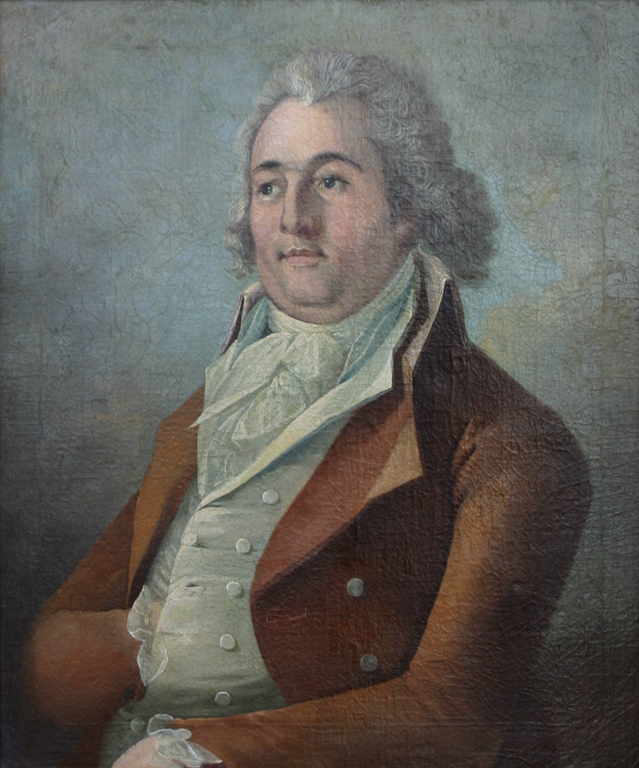CHRISTIAN GULLAGER
1759-1826Amandus Christian Gullager, an important portraitist, theatrical and decorative painter, and modeler in plaster during the American Federal Period, was born in Copenhagen, Denmark in 1759. He was the son of a servant in the household of government official, horticulturist, and print collector Joachim Wasserschlebe. Gullager studied at the Royal Academy of Fine Arts in Copenhagen, where he won a silver medal (Lille Solvmedaille) in 1780. A single painting from Gullager’s Danish period is extant, a portrait of a relative, Mrs. Bodel Saugaard Acke, painted in 1782. Gullager emigrated to America sometime before 1786, the year he was married to Mary Maley Selman in Newburyport, Massachusetts. The Gullagers would have nine children. The artist continued to paint portraits during his time in Newburyport. His early style reflected that of provincial Danish painting. By 1789 Gullager was living in Boston, where he is first listed in the city directory as a portrait painter in Hanover Street. He is mentioned in a Boston newspaper as one of the two “best portrait painters of this metropolis,” the other being John Johnston (1753-1818). Gullager also made visits to Worcester, Massachusetts to paint portraits. In October and November of 1789, in Boston and then in Portsmouth, New Hampshire, the portraitist made life sketches of George Washington from which he produced a portrait and a plaster bust. In 1796 Gullager is listed in the city directory as a “limner” at “Tremont Street.” During his time in Boston Gullager developed a more rococo style of portraiture characterized by vigorous and direct brushwork. In 1797 Gullager moved to New York City where he advertised as a “portrait and theatrical painter” in Maiden Lane. By 1798 the artist had relocated to Philadelphia, where he worked as a portrait, ornamental, and miniature painter. By this time his style had changed to reflect the influence of Gilbert Stuart, John Trumbull, and John Wesley Jarvis, in their more formal, more muted approach to subjects and palette. But by 1806 he appears to have separated from his wife–perhaps caused by his improvident manner of living as attested by his appeal to the Insolvency Act of the State of Pennsylvania in December of 1798- and went off looking for work in theatrical scenery and sign painting in New York. He then spent two years living and working in Washington, DC. The artist died at the home of his granddaughter, Elizabeth Adams Ball, in Philadelphia in 1826. He is buried at the Second Presbyterian Church Yard, Third and Arch Streets. The artist’s work is held in national and international private and public collections, among them: the American Antiquarian Society; Bowdoin College Art Museum; Christ Church, Boston; Chrysler Museum of Art; Corcoran Gallery of Art; Daughters of the American Revolution Museum; Deerfield Academy; First Troop, Philadelphia City Cavalry; Insurance Company of North America; King’s Chapel, Boston; Massachusetts Historical Society; Massachusetts State House; Museum of Fine Art, Boston; National Portrait Gallery; Pilgrim Society, Plymouth; Princeton University; the Royal Danish Embassy, Washington, DC; Saint Louis Art Museum; Santa Barbara Museum of Art; Wadsworth Atheneum Museum of Art; Henry Francis Du Pont Winterthur Museum; and the Worcester Art Museum. Important Gullager exhibitions were held at the Worcester Art Museum in 1949 and at the National Gallery of Art, Washington, DC in 1976.
CHRISTIAN GULLAGER
Artworks for Sale
 CHRISTIAN GULLAGER
CHRISTIAN GULLAGERPortrait of a New England Gentleman c.1795
Oil
29 x 24 1/2 inches; Framed: 33 x 28 1/2 inches
Click here for more information
